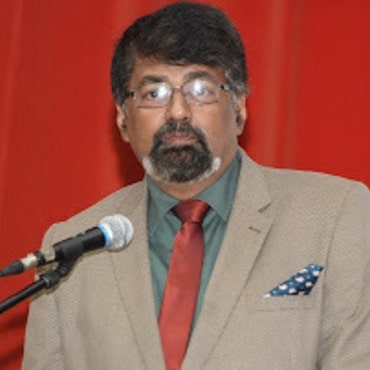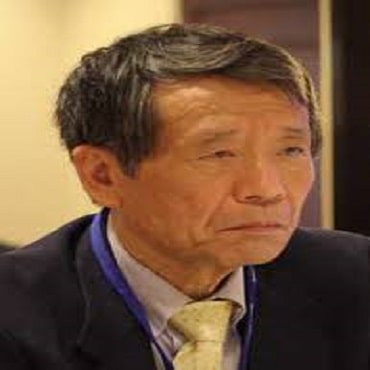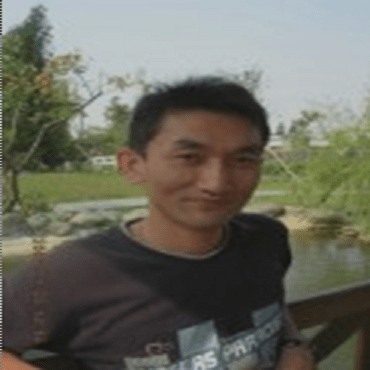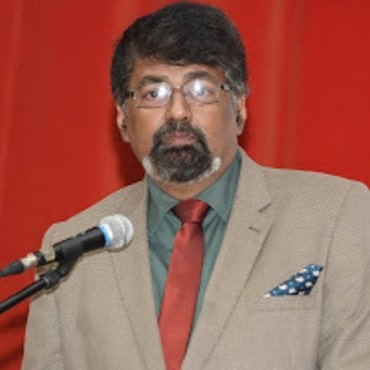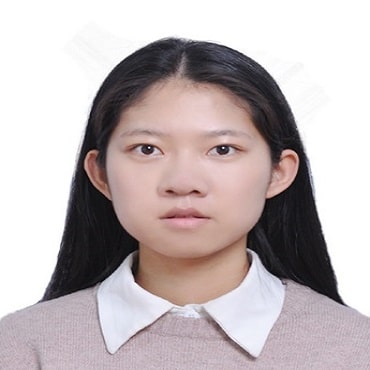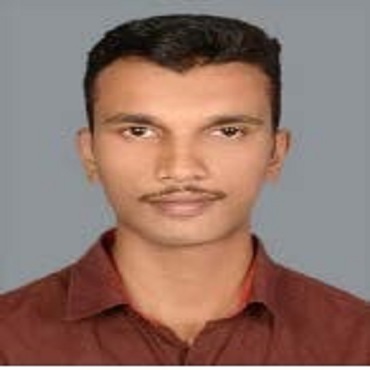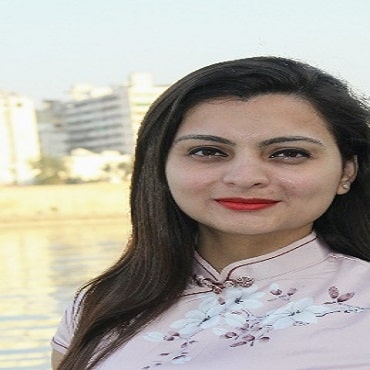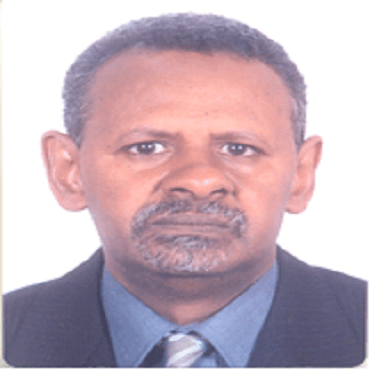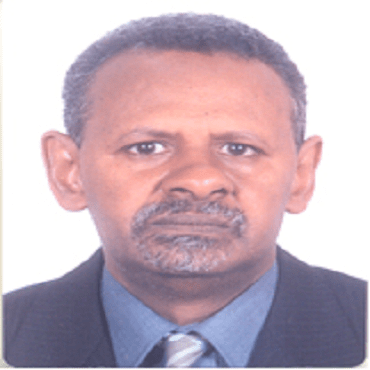Scientific Program
Keynote Session:
Title: Self-reinforced polymer composites- A global solution to technological challenges
Biography:
Padmanabhan Krishnan is currently working on the dynamics of composite materials. He took his PhD from IISc, Bangalore, and has rich post-doctoral experience from the USA and Singapore. He has more than 260 publications international journals. He administers & guides research. He is a life fellow of four organizations and a recipient of many national and international awards.
Abstract:
Self-Reinforced Polymer Composites which has the same material in different structures as the matrix and the reinforcement possess comparable shear and tensile strengths unlike the glass, boron or carbon fibre reinforced polymer composites. Due to their ultra-light weight specific properties (The olefins like polyethylene and polypropylene are lighter than water), they are increasingly used in marine, transportation, electronics and aerospace luggage applications. In this key note lecture, Low and High density Polyethylene, Ultra High Molecular Weight Polyethylene, Polypropylene, Polyamide and other self-reinforced polymer composites are evaluated for the purpose of correlating their interfacial properties with the static and dynamic mechanical properties. As the same material is bonded to itself in as many structurally different forms as possible, a skilled tailoring of the micro-interface between the matrix and the reinforcement and its evaluation play a major role in deciding the macro-structural properties of the composite. Interfacial characterization using specially designed pull out tests and spectroscopy, static mechanical tests using computer controlled Universal Testing Machines, drop mass impact tests and post failure microscopic analysis reveal the relationship between interfacial properties and the static and dynamic mechanical properties of these ultra-light composite materials. Some of the benchmarked SRPC designs that find high-end applications in ballistic helmets and vests are discussed. Interesting case studies will be quantitatively highlighted. Current methods of improving the properties of matrix and reinforcement material, their processing and modification of the interface for superior performance will be discussed. Some of the SRPCs float on water when processed in any shape that provides for novel applications in air cargo systems and marine structures where floatability and light-weighting are important in energy and cost savings with safety included. As most of the SRPCs are thermoplastics, their recyclability, disposability and degradability issues are taken into consideration. Carbon/ Carbon composites processed through the cost effective polymer route that find wide applications in tribology and ablation are discussed. Bio friendly and bio-derived SRPCs which answer some of the environmental concerns are increasingly being designed and developed for similar applications not as lesser substitutes but as design and durability specific alternatives. The keynote lecture concludes with projections on consumption, demand and foreseen issues and challenges. Existing solutions and a vision for a consensual future for SRPCs are charted out.
Title: Mechanical properties of a multi-layered nano-composite about implant longevity of hip prosthesis
Biography:
Masaru Matsuo is a full time professor of Dalian University of Technology in China Since September 1st 2014. He had completed his PhD at Kyoto University in Japan and he was a professor of Nara Women’s University. He is a visiting professor of Dalian University of Technology. He has published more than 200 papers in refereed journal articles. He is IUPAC fellow and he was “Certificate of Membership Award of ACS (July 2015~ July 2018). He received “Award of Society of Fiber Science and Technology of Japan” on May 1990, “Paul Flory Polymer Research Prize” on April 2010 and “Certificate of friendship Award of Liaoning Province in China” on September 2011.
Abstract:
Recently, local Young’s modulus of nano-composites is mainly done by load-displacement curve resulting from the Nano indentation process. The problem for obtaining Young’s modulus by indentation method is the difficulty in evaluating Poisson’s ratio of the bulk composite. The present evaluation refers to the importance for Poisson’s ratio of implant longevity of hip prosthesis in orthopaedics. Different from actual orthopaedics, ultra high molecular weight polyethylene (UHMWPE)/hydroxyapatite (HA) composite was prepared as a substrate layer by the solution-gel method. He is bioceramic with good bioactivity. Hence the composites have the advantage of overcoming the problems of brittleness as well as adverse pathological reaction. The four layers with different HA contents were prepared by a sol-gel process, and the four components were hot-moulded to make a composite with HA gradient content without disappearing spongy-like structure. The friction coefficient decreases with increasing HA content indicating better condition as a bearing material in the femoral. To obtain complex Poisson’s ratio * of the resultant gradient composite (GC), the complex tensile modulus E* and shear modulus G* were measured. The evaluation was done as a function of temperature as follows: The values of and were calculated based on the concept that each layer lies adjacent to the other layers with the interface parallel to external excitation direction, so that the strains at the boundary are identical.
Title: A method to control the polystyrene runaway reaction
Biography:
Ibrahim M. H. Maafa is an assistant professor in Chemical Engineering, Jazan University since 2016. He had completed his PhD in Chemical Engineering at 2016 from University of Waterloo and MASc in Chemical Engineering at 2006 from University of Waterloo. He did his BS in Chemical Engineering from KSU in 1998. He was working as a process engineer in SABIC R&T for more than 10 years. He has more than 20 years of experience in the polymer synthesis and simulation and modeling. He interests in free radical and coordination polymerization, polymer degradation, catalysis.
Abstract:
The preferred method to produce the polystyrene is mass process. It consists of a series of reactors followed by a devolatilization unit to remove the unreacted styrene. The first reactor is called prepolymerizer. It is a boiling Continuous Stirred Tank Reactor (CSTR). It is the largest volume in these series, has the highest styrene contents, highest amount of initiator, and highest rate of polymerization. When the rate of heat generation inside the prepolymerizer exceeds the heat of removal, the runaway of reaction will occur. Because the exothermic nature of polystyrene, the net heat gain can lead to self-acceleration reaction where the temperature and pressure increase uncontrollably until the rupture disc will occur. The need of retardant to kill the runaway reaction is very important. Different inhibitors were tested in a two-liter glass jacket reactor at different conditions. Para Benzoquinone (pBQ) and Nitroso Di Phenyl Amine (NDPA) show a good performance to stop the polymerization from a few minutes to several hours. It was found surprisingly that the retardant works even better with high conversion. Their effectiveness depends strongly on the temperature, time of addition and their concentration. The higher the temperature, the fast the formation of radicals, the retardant will not be able to stop the polymerization reaction. The drawback of using the retardants is yellow color which is producing of off-specification material and the contamination of the process. The duration to clear the product cannot be determined in the laboratory.
Oral Session 1:
- Plastics Engineering - Current Innovations & Applications, Composite Plastic Materials, Polymer Chemistry, Plastics in Packaging, Plastics Revolutionized Healthcare, Polymer Degradation and Stabilization, Nano Material and Nanotechnology

Chair
Padmanabhan Krishnan
VIT University, India

Co-Chair
Masaru Matsuo
Dalian University of Technology, China
Title: Evaluation of Wind Resistance for an Innovative Recycled Plastic Greenhouse
Biography:
Meng-Hao Tsai is an Associate Professor, National Pingtung University of Science and Technology, Taiwan. He had received his PhD degree in civil engineering from the National Taiwan University in 1998. After graduation, He had worked as a short-term post-doctoral research associate in the State University of New York at Buffalo and Tokyo Institute of Technology. He entered the Structural Engineering Sector (II) of Taiwan CECI Engineering Consutant Inc. in 2002. After two years industrial experience, he joined the Department of Civil Engineering at the National Pingtung University of Science and Technology in 2004.
Abstract:
A recycled plastic material made of Polyethylene Terephthalate (PET), Nylon, and glass fiber reinforced nylon and designated as PA6GF plastic was applied to the main structural members of a simple greenhouse in this study. Comparisons between the mechanical properties of the traditional galvanizing steel and the PA6GF plastic were made to estimate the section dimensions required for the recycled plastic simple greenhouse. Structural performance of galvanized steel and PA6GF plastic greenhouse models were evaluated under designated wind loads. Under the Beaufort-scale 11 wind loadings, the greenhouse models designed with plastic pipes of 5 cm diameter and 1 cm thickness and with plastic tubes of 5 cm width and 1 cm thickness could have maximum displacement response and section forces similar to that of the galvanized steel greenhouse. The analysis results indicated that with appropriate design, the PA6GF plastic could be an alternate material for the construction of the simple greenhouse frames.
Title: Effect of nucleating agent supported on zeolite via the impregnation on the crystallization ability of isotactic polypropylene and its mechanism
Biography:
Chao Li is now a graduate student mainly engaged in the field of modified polypropylene properties in East China University of Science and Technology, China. She had completed his Bachelor's degree from Wuhan University of Technology when she was 22 years old.
Abstract:
Addition of an alpha-nucleating agent is the simple and effective method to increase nucleation efficiency of isotactic polypropylene (iPP). However, severe agglomeration and poor dispersibility of sodium 2, 2’-methylene-bis (4,6-di-tertbutylphenyl) phosphate (NA11), decrease the nucleation efficiency in the iPP, and much more nucleating agent is needed to maintain the nucleating property. As a result, it becomes the key how to decrease the size of NA11 and increase the nucleating property. In this paper, zeolite 4A (Z4A) was firstly supported by NA11 through solution impregnation, and NA11 was dispersed by Z4A depending on the dispersion of zeolite as carrier for the second component. Then the dispersed NA11 system (NA11-Z4A) exhibited a superior nucleation behaviour during the crystallization of the iPP matrix when it was used with iPP together. The isothermal and non-isothermal crystallization kinetics indicated that the NA11-Z4A /iPP system had the best crystallization effect. Polarized optical microscopy (POM) and scanning electron microscopy (SEM) analyses showed that the size of NA11 was decrease obviously when it was adsorbed on the surface of Z4A, which leads a better dispersibility of the nucleating agent and thus an accelerated nucleation process in the iPP matrix. In the end, the mechanism for the excellent dispersibility of NA11-Z4A, which was based on hydrogen bonding between NA11 and Z4A, was confirmed by Fourier transform infrared spectroscopy (FT-IR). Based on the research work, the solution impregnation strategy can potentially be applied to other systems to inhibit the agglomeration and improve the dispersibility of additives in iPP.
Title: Polymeric foams for sandwich constructions- structure property correlations and applications
Biography:
Padmanabhan Krishnan is currently working on the dynamics of composite materials. He took his PhD from IISc, Bangalore, and has rich post-doctoral experience from the USA and Singapore. He has more than 260 publications international journals. He administers & guides research. He is a life fellow of four organizations and a recipient of many national and international awards.
Abstract:
This study presents an introduction to polymeric foams their types, classification and examples. Their cellular structure, architecture and structure property correlation will be discussed in detail. Novel processing methods and cost effective production techniques to achieve superior performance will be highlighted. An interesting observation of the Poisson paradox in foams will be explained based on the density, cell size and wall thickness of various material candidates. The mechanisms contributing to the observed behaviour of conventional and unconventional foams will be discussed. Examples of foams applied in thermal and acoustic insulation, high stiffness and strength requirements and impact resistance will be provided. Smart foams and Nano cellular foams, the new entrants in the field, will be introduced to the community. An overview of the applications in sandwich composite constructions, multilayer applications, volumetric efficiency applications, metal organic frameworks and Rockwool /polymer hybrids will be provided.
Title: The effect of polyhedral oligomeric silsesquioxanes supported alpha-nucleating agent on the properties of isotactic polypropylene
Biography:
Xian Zhang is engaged in the application of polyhedral oligomeric silsesquioxanes. She had completed her Bachelor degree from Qingdao University of science and technology when she was 21 years old. In 2017, she entered East University of science and technology, China to study for a doctoral degree.
Abstract:
In this paper, the nucleating agents supported on the surface of polyhedral oligomeric silsesquioxanes (POSS) were prepared and their effects on the properties of isotactic polypropylene (iPP) were investigated. The reduced sizes of alpha-nucleating agent (NA-40) were proved using scanning electron microscopy and energy dispersive X-ray spectroscopy. The nucleating efficiency of NA-40 was investigated via analysing the mechanical properties and crystallization behaviour of polypropylene. It is found that the flexural modulus of iPP increases by 11.6 % with the addition of 0.04 wt. % NA-40 alone and increases by 23.3 % when the same content of NA-40 support on octa methyl silsesquioxane (OMS). Especially, using OMS as the support will not determine the optical properties of polypropylene because of the compatibility between OMS and iPP. Moreover, due to the existence of OMS, the toughness of the system will not decrease compared to add with NA-40 alone. The results of investigation showed that the supported α-nucleating agent prepared by supporting NA-40 on OMS exhibited higher nucleation ability compared to commercial NA-40 powder.
Title: Regenerating polymers
Biography:
Bibin Sajan has started work at Beta Healthcare Products Pvt Ltd, Kerala in the position of chemist. He had completed his Diploma in polymer technology at the age of 21 years from Kerala Technical Education University. Then Allied academie selected my abstract for oral presentation on Germany Premc Annic 2018 accepted my abstract to present oral presentation.
Abstract:
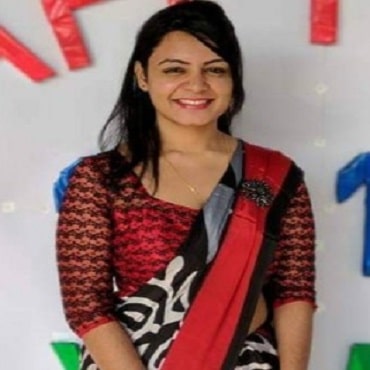
Rathnayaka Mudiyanselage Sachini Swarnamala Amararathne
University of Sri Jayewardenepura, Sri LankaTitle: Thermo-oxidative degradation of modified starch polymer composite ameliorated for industrial packaging applications-A study of analyzing the effect for degradation by assembling pro-oxidants and elastomers into esterified starch (with lauric acid) -plastic blend
Biography:
Rathnayaka Mudiyanselage Sachini Swarnamala Amararathne is working as the Quality Assurance Manager and the head of the R & D department in Ceylon Polymer Pvt Ltd, Sri Lanka where she conducts her research trials. She is a 26 years old individual, has completed her B.Sc. Specialized in polymer science and technology in 2017 from University of Sri Jayewardenepura, Sri Lanka and was selected to follow M.Sc. in Polymer Science and engineering program in the same university and précised to complete the post graduation in 2019.
Abstract:
This research is striving to develop a thermo degradable starch plastic compound/ master batch for industrial packaging applications. A native corn starch modified with an esterification reaction of lauric acid is melt blend with an unsaturated elastomer (styrene-butadiene-rubber/styrene-butadiene-styrene). A trace amount of a metal salt is added into the internal mixer to study the effect of pro-oxidants in a thermo oxidative environment. Then the granulated polymer composite which is consisted with 80-86% of polyolefin (LLDPE,LDPE,PP) as the pivotal agent; is extruded with processing aids, antioxidants and some other additives in a co-rotating twin-screw extruder. The pelletized composite is subjected to compression moulding/ Injection moulding or blown film extrusion processes to acquire the samples/specimen for tests. The degradation process is explicated by analyzing the results of fourier transform infrared spectroscopy (FTIR) measurements, thermo oxidative aging studies (placing dumb-bell specimen in an air oven at 70 °C for four weeks of exposure.) Governed by tensile and impact strength test reports. Furthermore the samples were elicited into manifold outdoors to inspect the degradation process.
Title: Vibrational analysis of CO2 laser treated poly (lactic acid)
Biography:
Foram Dave joined Ph.D. at Institute of Technology Sligo, Ireland in September 2018 in the field of Laser Transmission Welding of Polymers along with Abbott diagnostics. She has completed her bachelor of engineering in Rubber Technology (2009-13) from Gujarat Technological University and master of technology in Polymer Science and Engineering from Indian Institute of Technology, Delhi, India (2014-16). Her master thesis was based on biodegradable polymers for biomedical applications. She worked as a senior engineer (2016-18) at Robert Bosch Engineering and Business Solutions Pvt. Ltd in Automotive Electronics department dealing with sealants, thermal interface material and conformal coating.
Abstract:
Poly Lactic Acid is one of the most commonly deployed bioresorbable polymer used for the biomedical and consumer applications. For any application, the degradation rate of the polymer is a key consideration. The degradation rate of PLA can be altered through various techniques like blending, grafting, and gamma radiation. Laser radiation is one of the most efficient and easily controlled thermal processes for treating bioresorbable polymers. However, the structural changes taking place during the treatment can enhance or accelerate degradation of the material. In order to study the structural changes in the polymer, a detailed vibrational analysis of CO2 laser treated PLA sheets were carried out using simple and non-destructive techniques: Fourier transfer infrared spectroscopy: attenuated total reflection (FT-IR:ATR) and Raman spectroscopy. The spectra before and after laser treatment were compared. The samples were examined by taking measurements on both sides of the sample (irradiated and non-irradiated side). This helped to verify the bulk modification of the polymer through laser treatment. There were variations observed in the spectra which were interpreted as changes in the degree of crystallinity of the polymer sample. Raman spectroscopy further verified the vibration regions observed in the FT-IR: ATR spectrum.
Title: Bioenergy, environment and sustainable development
Biography:
Abdeen Mustafa Omer (BSc, MSc, PhD) is an Associate Researcher at Energy Research Institute (ERI). He obtained both his PhD degree in the Built Environment and Master of Philosophy degree in Renewable Energy Technologies from the University of Nottingham. He is qualified Mechanical Engineer with a proven track record within the water industry and renewable energy technologies. He has been graduated from University of El Menoufia, Egypt, BSc in Mechanical Engineering. His previous experience involved being a member of the research team at the National Council for Research/Energy Research Institute in Sudan and working director of research and development for National Water Equipment Manufacturing Co. Ltd., Sudan. He has been listed in the book WHO’S WHO in the World 2005, 2006, 2007 and 2010. He has published over 300 papers in peer-reviewed journals, 200 review articles, 15 books and 150 chapters in books.
Abstract:
Sustainable energy is energy that, in its production or consumption, has minimal negative impacts on human health and the healthy functioning of vital ecological systems, including the global environment. It is an accepted fact that renewable energy is a sustainable form of energy, which has attracted more attention during recent years. A great amount of renewable energy potential, environmental interest, as well as economic consideration of fossil fuel consumption and high emphasis of sustainable development for the future will be needed.
Keynote Session:
Title: Agricultural residues, sustainable development and environment
Biography:
Abdeen Mustafa Omer (BSc, MSc, PhD) is an Associate Researcher at Energy Research Institute (ERI). He obtained both his PhD degree in the Built Environment and Master of Philosophy degree in Renewable Energy Technologies from the University of Nottingham. He is qualified Mechanical Engineer with a proven track record within the water industry and renewable energy technologies. He has been graduated from University of El Menoufia, Egypt, BSc in Mechanical Engineering. His previous experience involved being a member of the research team at the National Council for Research/Energy Research Institute in Sudan and working director of research and development for National Water Equipment Manufacturing Co. Ltd., Sudan. He has been listed in the book WHO’S WHO in the World 2005, 2006, 2007 and 2010. He has published over 300 papers in peer-reviewed journals, 200 review articles, 15 books and 150 chapters in books.
Abstract:
Sudan's climatic conditions (mainly the rainy seasons) enable double annual harvests (in July and November) in the southern parts of the country. Most of the agricultural activities are concentrated near the Nile River. The El Gezira irrigation system that is located between the White and the Blue Nile Rivers (both rivers merge to form the Nile River) is the most important agriculture project and, according to some statistics, is also the largest artificially irrigated region in the world. As the irrigation system has been put in place, sorghum, wheat, and groundnuts have been planted instead of cotton in an effort to make Sudan self-sufficient in foodstuffs. The agricultural sector is the most important economic sector in Sudan. It created 39 percent of the gross domestic production (GDP), employed about 80 percent of population, and contributed 80 percent of the country's exports in the late 1990s. Cotton is the main agriculture export item, although its export volumes have been decreasing recently. The lack of any marketing or developed market policy is evident. The government has suggested the end of export taxes in order to promote more agriculture products in the future. Other agricultural products include sesame seeds, sorghum, and gum Arabic. Animal husbandry represents a very important part of the national economy, as well. Its production increased during recent years as a result of better veterinary treatment, better credit policy, and higher prices in the market. Fishing is another important sector of the national economy. The average yearly production averages around 33,000 tons, from which sea fish represent about 1,500 tons. Perch is the most important fresh-water fish, which is caught mostly in the Nile River. About one-third of the total area of Africa's largest country is suitable for agricultural development. Abundant rainfall in the south permits both agriculture and grazing grounds for the large herds owned by nomadic tribes. In the north, along the banks of the Nile and other rivers, irrigation farming prevails. Of an estimated 16.9 million hectares (41.8 million acres) of arable landing 1998, about 1.9 million hectares (4.7 million acres) were irrigated. Principal cash crops are cotton, sesame, peanuts, sugarcane, dates, citrus fruits, mangoes, coffee, and tobacco; the principal subsistence crops are sorghum, millet, wheat, beans, cowpeas, pulses, corn, and barley. Cotton is the principal export crop and an integral part of the country's economy. In 2001, agricultural products accounted for 21.9% of imports and 19.2% of exports; there was an agricultural trade deficit of $24.5 million. Government regional development schemes have played a decisive part in the economy since the 1920s. The Gezira Scheme, located between the Blue and White Niles near their confluence at Khartoum, is the world's largest under a single management and provides a substantial portion of foreign exchange and government revenue. This storage irrigation project, which covers 840,000 hectares (more than two million acres) but has an additional potential of two million hectares (5 million acres), dates back to 1911 and was put into operation by a British firm. After the expiration of the firm's contract with the Sudanese government in 1950, the land was leased to tenant farmers, who numbered over 100,000 in 1987. They manage the scheme jointly with the government through the Gezira Board. In July 1980, construction began on the 354-km (220-mile) Jonglei Canal, intended to drain the Sudd swamp and channel water from the White Nile to the arid northern Sudan and to Egypt. Built by a French consortium at a projected cost of $260 million and scheduled for completion in 1985, the canal could irrigate up to 243,000 ha (600,000 acres) of Sudanese land. By 1984, however, the project had been halted by the Sudanese People’s Liberation Army (SPLA) opposition, with less than 100 km (62 mi) to be excavated. In 1992, the public and private agricultural sectors invested heavily in land preparations, pesticides, and related inputs. Agricultural funding for such projects comes from the World Bank, the African Development Bank, and the International Fund for Agricultural Development. However, completion of these projects has been complicated by debt-repayment problems. In spite of efforts to improve Sudan's agricultural resources, famine conditions have existed in southern Sudan since 1986. Inadequate rains, a poor distribution infrastructure, and civil war have hampered relief efforts. Among agricultural products in 1999 were sorghum, 3,045,000 tons; peanuts, 980,000 tons; sesame, 220,000 tons, (the third highest in the world after India and China); and wheat, 168,000 tons. Cotton fibre production in 1999 was 172,000 tons. Production in 1999 also included sugarcane, 5,950,000 tons; millet, 1,499,000 tons; cottonseed, 131,000 tons; tomatoes, 240,000 tons; dates, 176,000 tons; yams, 136,000 tons; and corn, 65,000 tons.

